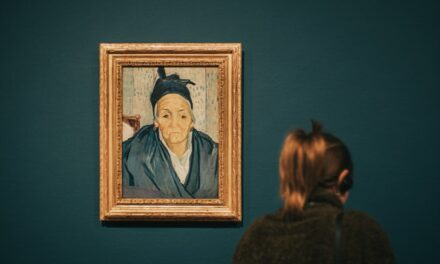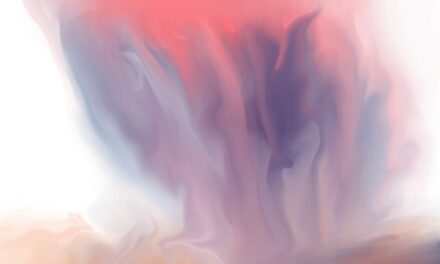Claude Lorrain, born Claude Gellée in 1600, stands as a monumental figure in the realm of landscape painting. His works are celebrated for their ethereal quality and masterful use of light, which have left an indelible mark on the art world. Lorrain’s landscapes, often imbued with a sense of tranquillity and harmony, reflect not only the beauty of nature but also the philosophical ideals of his time.
As a pioneer of the landscape genre, he transformed the way artists approached the depiction of the natural world, elevating it to a subject worthy of serious artistic consideration. Lorrain’s influence extends far beyond his own lifetime, shaping the trajectory of landscape painting for generations to come. His ability to capture the interplay of light and atmosphere has inspired countless artists, from the Romantic painters of the 19th century to contemporary landscape artists.
In examining Lorrain’s life and work, one gains insight into the evolution of landscape art and the enduring legacy of a master who saw beauty in the world around him.
Summary
- Claude Lorrain was a prominent French painter known for his landscapes and seascapes.
- He was influenced by the classical style and the work of other artists, such as Titian and Poussin.
- Lorrain’s use of light and composition in his landscapes and seascapes set him apart from his contemporaries.
- He gained patronage from important figures and achieved great success during his lifetime.
- Lorrain’s travels and inspirations from Italy and other European countries greatly influenced his work and style.
Early Life and Education
Claude Lorrain was born in the small town of Chamagne, located in the region of Lorraine, France. His early life was marked by modest beginnings; his family was not affluent, and his father worked as a vine dresser. This humble upbringing would later inform his appreciation for nature and its landscapes.
At a young age, Lorrain displayed an aptitude for art, which led him to pursue an apprenticeship in painting. He eventually moved to Rome, where he would immerse himself in the vibrant artistic community of the time. In Rome, Lorrain studied under several prominent artists, including the Baroque painter Agostino Tassi.
This period of education was crucial for Lorrain, as it exposed him to various artistic techniques and styles. Tassi’s influence is particularly notable in Lorrain’s early works, where one can observe a blend of classical ideals with emerging Baroque sensibilities. The rich cultural environment of Rome provided Lorrain with a wealth of inspiration, allowing him to refine his skills and develop his unique artistic voice.
Style and Influences
Lorrain’s style is characterised by a harmonious blend of realism and idealism, where nature is depicted with both accuracy and an almost poetic quality. His landscapes often feature expansive skies, gently rolling hills, and serene bodies of water, all bathed in a warm, golden light that evokes a sense of peace and nostalgia. This distinctive approach to landscape painting set him apart from his contemporaries and established him as a leading figure in the genre.
The influences on Lorrain’s work are manifold. He drew inspiration from classical antiquity, particularly the works of ancient Roman painters and poets who celebrated nature’s beauty. Additionally, the burgeoning Baroque movement played a significant role in shaping his artistic vision.
The dramatic use of light and shadow, as well as the emotional depth found in Baroque art, can be seen in Lorrain’s compositions. Furthermore, his travels throughout Italy exposed him to diverse landscapes and artistic traditions, enriching his understanding of nature and its representation.
Landscapes and Seascapes
Lorrain’s landscapes are often imbued with a sense of narrative, inviting viewers to engage with the scenes depicted. His ability to create depth through atmospheric perspective allows for a seamless transition between foreground and background, drawing the eye into the composition. The inclusion of figures within these landscapes often serves to enhance the sense of scale and context, grounding the viewer in the scene while simultaneously celebrating the grandeur of nature.
Seascapes also form an integral part of Lorrain’s oeuvre. His depictions of coastal scenes are characterised by their dynamic interplay between land and water, capturing the ever-changing moods of the sea. The shimmering reflections on water surfaces and the dramatic skies that often accompany these compositions showcase Lorrain’s mastery over light and colour.
These works not only highlight his technical prowess but also reveal his deep appreciation for the natural world and its myriad forms.
Patronage and Success
Lorrain’s rise to prominence can be attributed in part to his ability to attract influential patrons who recognised his talent. Among these patrons were members of the nobility and wealthy merchants who sought to adorn their homes with exquisite works of art. His reputation grew steadily throughout his career, leading to numerous commissions that allowed him to explore new themes and techniques.
The support from patrons enabled Lorrain to establish a successful workshop in Rome, where he trained aspiring artists and produced a significant body of work. His paintings were highly sought after, often commanding impressive prices at auction. This success not only solidified his status as a leading landscape painter but also contributed to the broader acceptance of landscape art as a legitimate genre within the art world.
Travels and Inspirations
Lorrain’s travels throughout Italy played a pivotal role in shaping his artistic vision. He journeyed through regions such as Tuscany and Campania, where he encountered breathtaking landscapes that would later inform his compositions. The picturesque vistas he observed during these travels provided him with a wealth of inspiration, allowing him to capture the essence of Italy’s natural beauty in his paintings.
Moreover, Lorrain’s travels extended beyond Italy; he ventured into other parts of Europe, including France and Germany. These experiences broadened his artistic horizons and exposed him to diverse cultural influences. The landscapes he encountered during these journeys enriched his understanding of nature’s complexities, ultimately leading to a more nuanced approach in his work.
Techniques and Materials
Lorrain’s technical prowess is evident in his meticulous approach to painting. He employed a variety of techniques that contributed to the luminous quality of his works. One notable method was his use of glazing—a technique that involves applying thin layers of transparent paint over dried layers to create depth and richness in colour.
This practice allowed him to achieve the soft transitions between light and shadow that characterise many of his landscapes. In terms of materials, Lorrain primarily used oil paints on canvas or wood panels. The versatility of oil paint enabled him to experiment with texture and layering, resulting in compositions that exude both vibrancy and subtlety.
Additionally, he often prepared his own pigments from natural materials, ensuring that he had complete control over the colours he employed in his work.
Legacy and Impact
The legacy of Claude Lorrain is profound, influencing not only his contemporaries but also generations of artists who followed in his footsteps. His innovative approach to landscape painting laid the groundwork for future movements such as Romanticism and Impressionism. Artists like J.M.W. Turner and John Constable drew inspiration from Lorrain’s mastery of light and atmosphere, incorporating similar techniques into their own works. Furthermore, Lorrain’s emphasis on nature as a subject worthy of artistic exploration helped elevate landscape painting within the broader context of art history. His ability to convey emotion through landscapes resonated with viewers, fostering a deeper appreciation for the natural world. Today, Lorrain is celebrated not only as a master painter but also as a pivotal figure in the evolution of landscape art.
Famous Works and Collections
Among Lorrain’s most celebrated works are “The Embarkation of Saint Ursula,” “Landscape with Cattle and Peasants,” and “Seaport with the Embarkation of Saint Ursula.” Each piece exemplifies his skillful handling of light and composition while showcasing his ability to weave narrative elements into serene landscapes. These works are housed in prestigious collections around the world, including The National Gallery in London and The Louvre in Paris. The enduring appeal of Lorrain’s paintings continues to captivate audiences today.
His works are frequently exhibited in major art institutions, where they serve as a testament to his artistic genius and lasting impact on landscape painting.
Criticism and Controversies
Despite his acclaim, Lorrain faced criticism during his lifetime from some quarters who believed that his idealised landscapes lacked authenticity. Critics argued that his depictions were overly romanticised, presenting an unrealistic view of nature that did not reflect its true complexities. However, this critique often overlooked Lorrain’s intention to evoke emotion rather than provide an exact representation.
In contemporary discussions about Lorrain’s work, debates continue regarding the balance between idealism and realism in art. While some scholars argue that Lorrain’s approach may have contributed to a disconnect between viewers and nature, others celebrate his ability to inspire awe through beauty. This ongoing dialogue highlights the multifaceted nature of art criticism and underscores Lorrain’s significance within it.
Conclusion and Final Thoughts
In conclusion, Claude Lorrain remains an iconic figure whose contributions to landscape painting have shaped artistic practices for centuries. His ability to capture the sublime beauty of nature through innovative techniques has left an enduring legacy that continues to inspire artists today. As we reflect on Lorrain’s life and work, we are reminded not only of his technical mastery but also of his profound appreciation for the world around him.
Lorrain’s paintings invite us into serene vistas where light dances across landscapes, encouraging us to pause and contemplate our relationship with nature. In an age where environmental concerns are increasingly pressing, Lorrain’s work serves as a poignant reminder of the beauty that exists in our surroundings—a beauty worth preserving for future generations. Through his artistry, Claude Lorrain has secured a place not only in art history but also in our collective consciousness as we strive to find harmony between humanity and nature.
For those interested in exploring different artistic techniques, a fascinating article on pastel drawings on tinted paper offers insights into how to create mood and atmosphere in artwork. This article delves into the use of pastels on coloured paper to evoke different emotions and enhance the overall impact of a piece. It provides valuable tips and techniques for artists looking to experiment with this unique medium.


